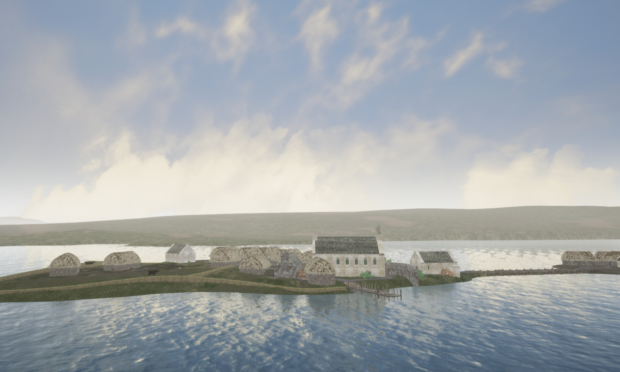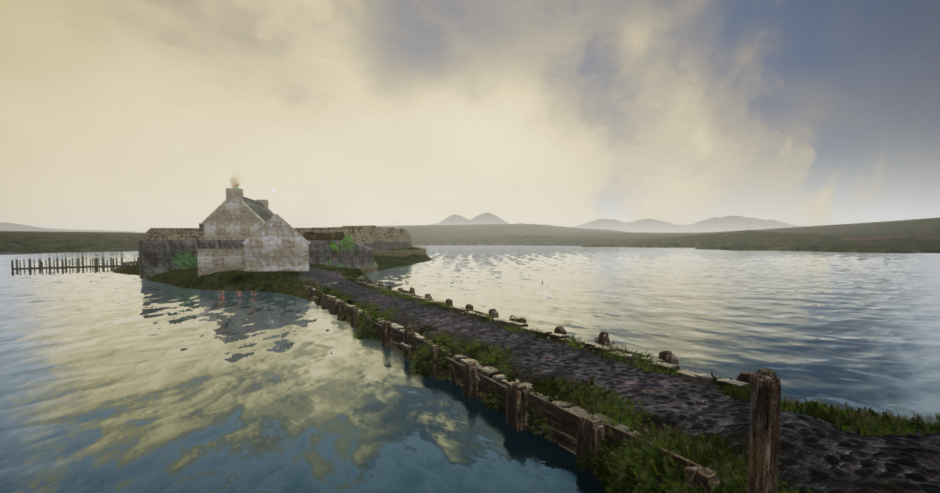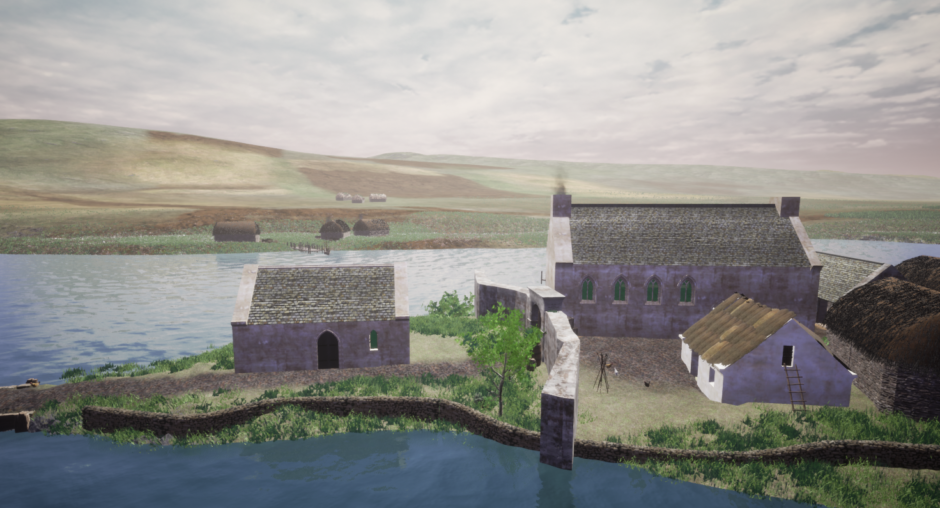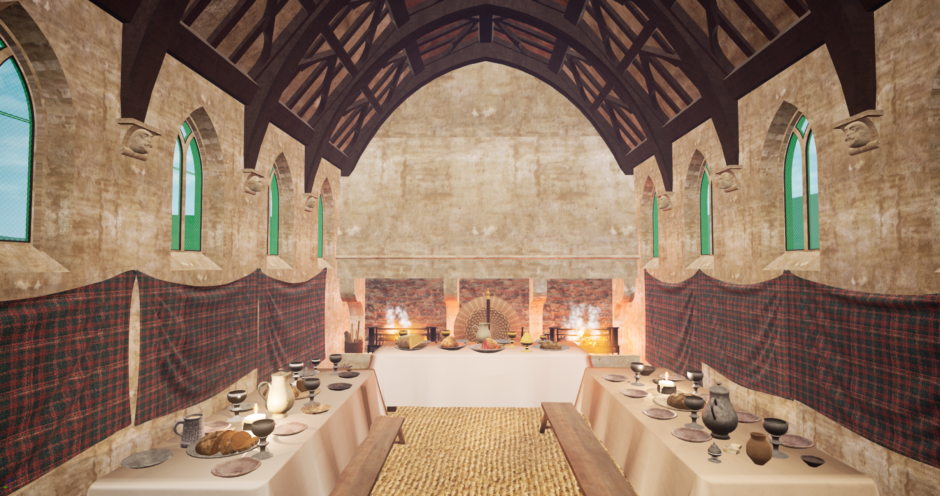Experts at St Andrews University have digitally recreated the lost medieval home of the Lords of the Isles.
Major archaeological work by the National Museum of Scotland has enabled the Fife university’s Open Virtual Worlds Team, and spin-out company Smart History, to visually reconstruct Finlaggan in the early 15th century – a time when it was the administrative and ceremonial centre of the Lordship of the Isles.
The Lords of the Isles ruled the Hebrides and parts of mainland Scotland and Ulster during the Middle Ages, with the Lordship traditionally held by the MacDonald family.
Scottish kings sought to curtail the MacDonalds’ influence and James IV sent a military expedition to sack Finlaggan in the 1490s.
Many of the buildings were completely destroyed, but the new reconstruction shows what Finlaggan may have resembled at its height.
In collaboration with the Finlaggan Trust, the reconstruction is based on discoveries made by the Finlaggan Archaeological Project, led by archaeologist Dr David Caldwell, who provided advice to the St Andrews team.
Documentary research and comparison with other late medieval sites has been used to ensure the reconstruction is as accurate as possible.
Dr Bess Rhodes, of St Andrews University’s School of History and the School of Computer Science, explained: “Finlaggan was an amazing place to recreate digitally.
“Even today the islands of Eilean Mor and Eilean na Comhairle are beautiful places, and in the Middle Ages they were the site of a remarkable complex of buildings which blended local traditions with wider European trends.
“The work by Dr David Caldwell and the Finlaggan Archaeological Project has transformed our understanding of this site – giving us a glimpse of the relative comfort in which the Lords of the Isles and their followers lived, pampering their dogs with decorative collars, and enjoying music, imported wine and board games.”
The digital research in St Andrews was led by Dr Alan Miller of the School of Computer Science, while digital modelling was undertaken by Sarah Kennedy of the School of Computer Science, with additional historical research by Dr Rhodes.
The reconstruction will be available as an interactive virtual reality experience at the Finlaggan Trust’s visitor centre on Islay.
There is also a virtual reality app and an online video.
Dr Ray Lafferty, secretary of the Finlaggan Trust, added: “Despite its impact on the shaping of Scottish culture, Finlaggan and the Lordship remains little known to many.
“With this virtual reality reconstruction, we hope to give some sense of the site at the zenith of its power, when MacDonald rule stretched from the Glens of Antrim in Ireland to Buchan in the northeast of Scotland.”












